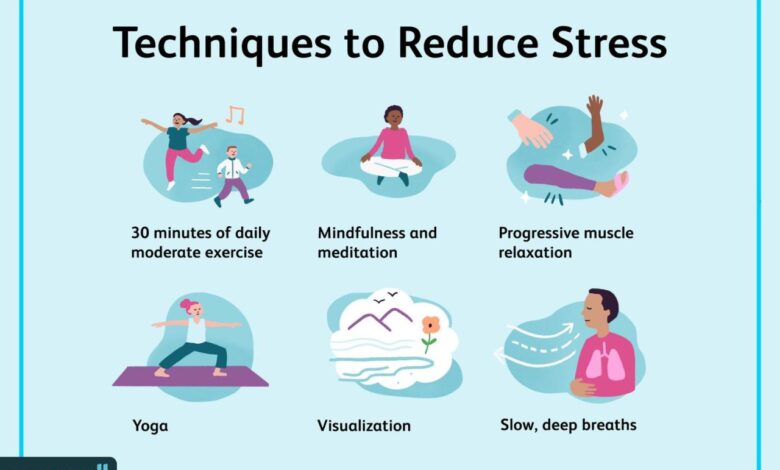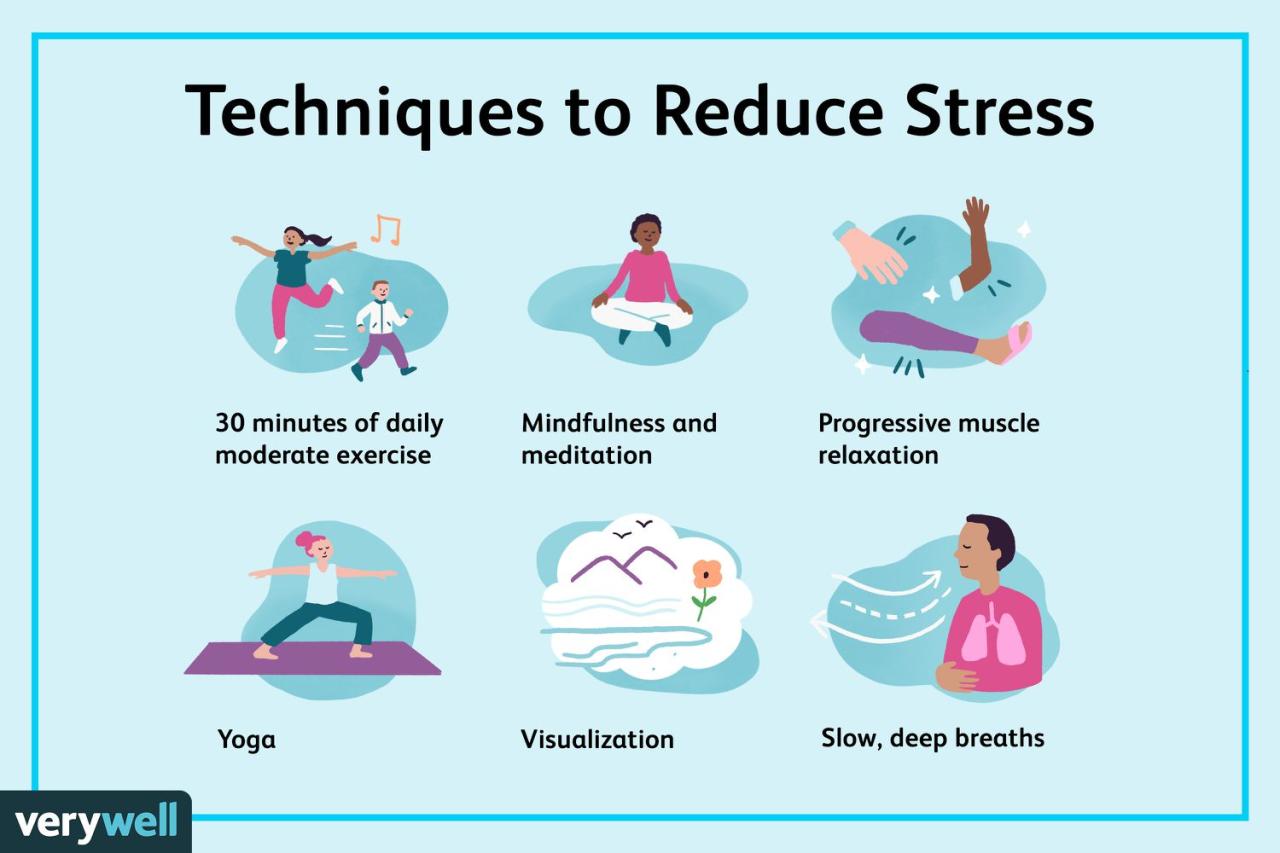
8 Quick Ways to Reduce Stress Right Now
8 Quick Ways to Reduce Stress Right Now: We all experience stress in our daily lives. Whether it’s deadlines at work, family obligations, or financial worries, stress can take a toll on our mental and physical well-being. But the good news is that there are simple, effective ways to manage stress and regain a sense of calm.
In this post, we’ll explore eight quick and easy strategies that you can implement right now to reduce stress and improve your overall well-being.
From deep breathing exercises to spending time in nature, these techniques are accessible to everyone and can be incorporated into your daily routine. So, if you’re feeling overwhelmed or anxious, take a deep breath, and let’s dive into these stress-busting strategies.
Deep Breathing Techniques
Deep breathing is a powerful tool for stress reduction, and it’s something you can do anytime, anywhere. When you’re feeling stressed, your body goes into “fight or flight” mode, which causes your breathing to become shallow and rapid. Deep breathing helps to slow down your heart rate, lower your blood pressure, and calm your nervous system.
Sometimes, the best way to de-stress is to shift your focus. Instead of dwelling on worries, try immersing yourself in a creative project. For example, planning your Thanksgiving table decor can be a fun and calming activity. Check out these 5 ways to fill your Thanksgiving table with color for inspiration.
Afterward, you’ll feel refreshed and ready to tackle whatever life throws your way.
Diaphragmatic Breathing
Diaphragmatic breathing, also known as belly breathing, is a simple yet effective technique for promoting relaxation and reducing stress. It involves using your diaphragm, a large muscle located beneath your lungs, to take deep, slow breaths. Here’s a step-by-step guide to practice diaphragmatic breathing:
- Find a comfortable position, either sitting or lying down.
- Place one hand on your chest and the other on your stomach.
- Inhale slowly through your nose, allowing your stomach to rise as your diaphragm expands.
- Exhale slowly through your mouth, allowing your stomach to fall as your diaphragm contracts.
- Continue this pattern for several minutes, focusing on the rise and fall of your abdomen.
Box Breathing
Box breathing is a technique used by military personnel to manage stress and improve focus. It involves inhaling, holding, exhaling, and holding your breath for equal durations, creating a “box” pattern on a graph.
Sometimes, the best way to de-stress is to take a break from the chaos and focus on something nourishing. A warm, comforting bowl of soup can do wonders for the soul, and luckily, you don’t have to sacrifice your healthy eating goals to enjoy it.
Check out this list of 9 hearty winter soups under 360 calories for some delicious inspiration. And remember, taking a few minutes to savor a nourishing meal is just one of many ways to reduce stress and feel better overall.
To practice box breathing, inhale for a count of 4, hold your breath for a count of 4, exhale for a count of 4, and hold your breath again for a count of 4.
Alternate Nostril Breathing
Alternate nostril breathing, also known as Nadi Shodhana, is a yogic technique that involves breathing through one nostril at a time. It helps to balance the left and right hemispheres of the brain, promoting relaxation and reducing stress.
To practice alternate nostril breathing, close your right nostril with your right thumb and inhale deeply through your left nostril. Then, close your left nostril with your ring finger and exhale through your right nostril. Inhale again through your right nostril, close your right nostril with your thumb, and exhale through your left nostril. Continue alternating nostrils for several minutes.
Mindful Meditation
Mindful meditation is a practice that involves focusing your attention on the present moment without judgment. It is a powerful tool for reducing stress, improving emotional regulation, and enhancing self-awareness. By bringing your attention to your breath, bodily sensations, and thoughts, you can develop a greater understanding of your own mind and body, and learn to navigate stressful situations with more ease.
Guided Meditations for Stress Relief
Guided meditations offer a structured approach to mindfulness, providing you with a clear path to follow. They can be particularly helpful for beginners, as they guide you through the process of focusing your attention and cultivating a state of calm.
Here are some examples of guided meditations for stress relief:
- Body Scan Meditation:This practice involves systematically focusing your attention on different parts of your body, noticing any sensations without judgment. This can help you become more aware of your physical state and release tension.
- Breathing Meditation:This simple yet effective practice involves focusing on your breath, observing the rise and fall of your chest or abdomen. By focusing on your breath, you can anchor your attention to the present moment and quiet your mind.
- Mindful Walking Meditation:This meditation involves bringing your awareness to the sensations of walking, such as the feeling of your feet on the ground, the movement of your legs, and the rhythm of your breath. It helps you connect with your body and experience the present moment more fully.
Establishing a Regular Meditation Practice, 8 quick ways to reduce stress right now
Regular meditation practice is key to reaping the benefits of mindfulness. Here are some tips for establishing a consistent routine:
- Start Small:Begin with short sessions, even just 5-10 minutes a day, and gradually increase the duration as you feel more comfortable.
- Find a Quiet Space:Choose a peaceful and comfortable space where you won’t be interrupted. This could be your bedroom, a quiet corner of your home, or even a park.
- Be Patient:It takes time to develop a consistent meditation practice. Don’t get discouraged if your mind wanders. Simply acknowledge your thoughts and gently redirect your attention back to your breath or chosen focus.
- Experiment with Different Techniques:There are many different types of meditation practices. Experiment with different techniques to find what works best for you.
- Join a Meditation Group:Connecting with others who practice meditation can provide support and motivation.
Closure: 8 Quick Ways To Reduce Stress Right Now

Incorporating these eight quick ways to reduce stress into your daily life can make a significant difference in your overall well-being. Remember, stress management is an ongoing journey, so be patient with yourself and experiment with different techniques to find what works best for you.
By prioritizing self-care and practicing these simple strategies, you can effectively manage stress and cultivate a more peaceful and balanced life.
Sometimes, the best way to de-stress is to indulge in something you love, but without the guilt! That’s why I’m always on the lookout for healthier options, like these 11 healthy pizzas under 400 calories. It’s a great way to enjoy a pizza night without completely derailing your healthy eating goals.
After all, a little treat can go a long way in reducing stress and keeping you feeling good!






